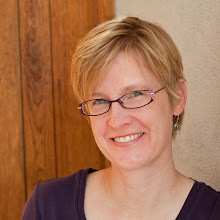
I have loved all the comments on my last post about getting an MFA (master of fine arts). Thank you all for your thoughtful responses.
I like Juliet's suggestion of doing an ATA Tapestry Topics issue on this topic. I think there are probably a lot of fiber artists out there with opinions on the subject.

(I have also found out lately that there are a lot of fiber artists out there with opinions on spinning wheels. Thanks to the people who said, "Try out lots of wheels." I am going to do just that at Convergence. And thanks to
EVFAC for loaning me this "emergency" Louet wheel until then! And yes, my lateral epicondylitis is feeling much better partly thanks to the hand therapist living in my head. Whew--sometimes my writing "style" is exhausting.)
How do we (people-who-define-ourselves-as-artists-sometimes) fill that need to "feel like an artist" when we don't have a degree in art? Work in fiber has traditionally been considered craft, not fine art. Having a tapestry of your painting woven was once considered a great honor and a mark of how good your art was (and places like the
Victorian Tapestry Workshop in Australia still do this)--and these tapestries are fabulous, but those weavers are not the artists, they are the technicians. If we both design and weave a tapestry perhaps we are both an artist and a technician. Or is the act of weaving the tapestry any different than the act of painting a painting? Painters also need skill in craft and are also "technicians".
I do not believe, as some artists seem to, that craft is a dirty word. Craft has been a unifying force in our country in so many eras in history. My job-that-pays-the-bills, occupational therapy, started as a mental health profession that did crafts with soldiers returning from WWI to facilitate return to normal mental functioning. (About here I am wondering if I was born in the wrong era.)
Lyn asked how we fill the need to become "more" of an artist? And I think many of us wonder why we should feel we need to validate our art in the first place.
I love all the ideas about stimulating creativity: artist residencies, classes in other media, books, taking college classes but not necessarily in a degree-seeking program... I read something not long ago about a practice of carrying around a small sketch book/journal for ideas and making much of your day about creative process. I have found that when I do this, it really works. I do pull the little moleskine out of my jeans pocket and scribble something down and that gets me thinking and before I know it I have three more ideas. Most of these ideas will never make it into a tapestry, but it gets my creativity flowing and that is what is most important.
Some new questions I am mulling over tonight:
Is tapestry weaving an art form or a decorative art? In what way is it each or both? The word craft comes into play there also. I am finishing the
Bauhaus Tapestry Project this summer and fall with shows in Albuquerque, NM and Erfurt, Germany. My study of the Bauhaus also brings up some of these questions. Initially, the Bauhaus had a master of form and a master of craft in each workshop. The master of form, perhaps unsurprisingly, got paid better than the master of craft. The idea however, was that the student had to learn both the craftsmanship of making something and the artistic design skills to make it a piece of art. The Bauhaus had the added intellectual goal of relating each kind of art to it's place in architecture.
All of these questions are murky and my thoughts about them are not at all clear--which is undoubtedly evident in this post. It is good to wonder about them however.
And finally, at least for tonight, thanks to Renee for saying, "You don't need a degree to have validation in the art world. Your work is your validation."
I agree Renee. I don't think I need an MFA to make me a "real" artist. But I do think that the work in a collaborative setting is extremely valuable, sometimes frustrating, and mostly fruitful. I will continue to look for ways to interact with other artists and teachers from my seat right here for now.



 Unfortunately my camera focused on the ground behind my hand, but this blurry yarn was the result of dying with the woad plant, a very light blue-green.
Unfortunately my camera focused on the ground behind my hand, but this blurry yarn was the result of dying with the woad plant, a very light blue-green.








